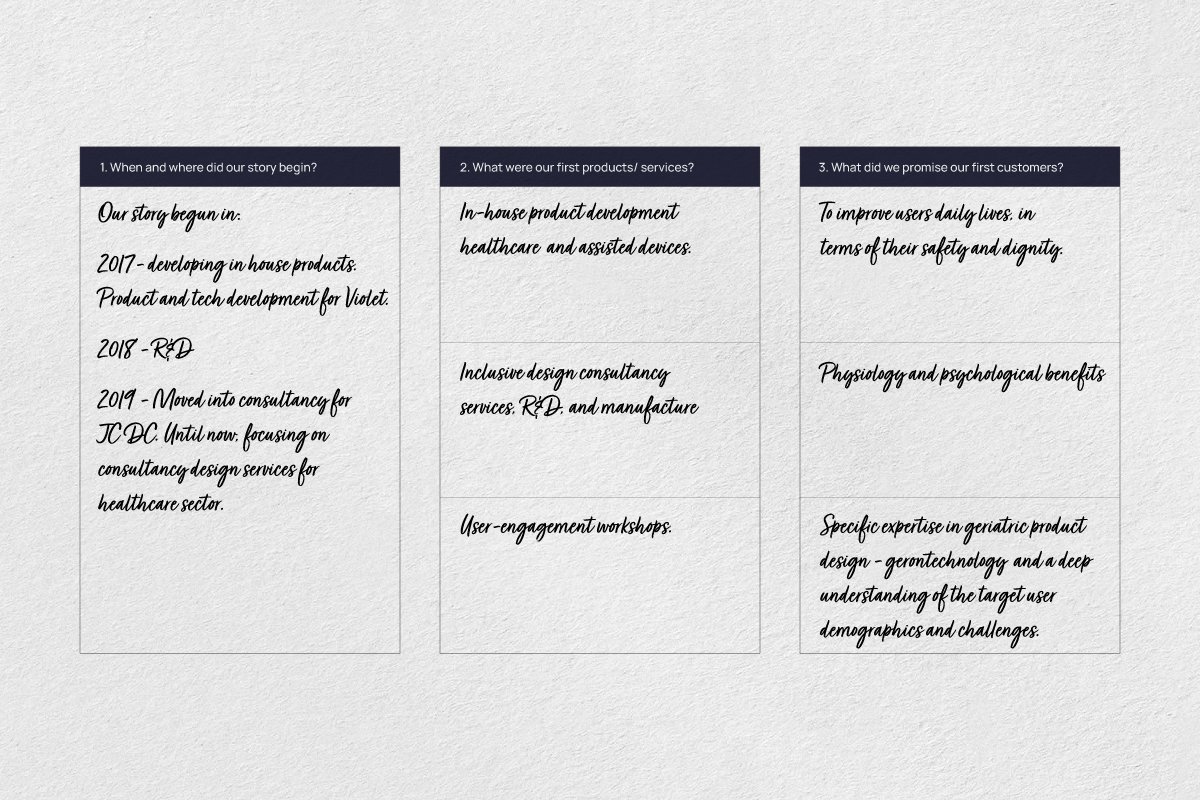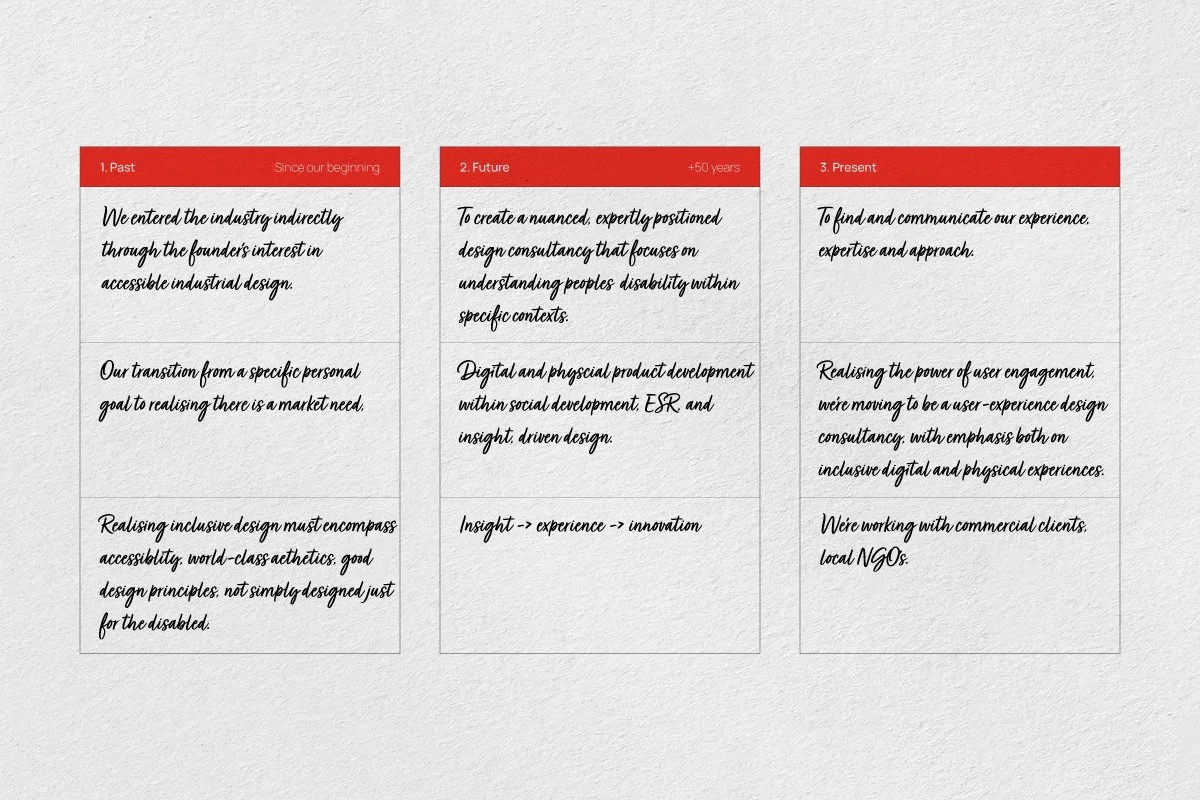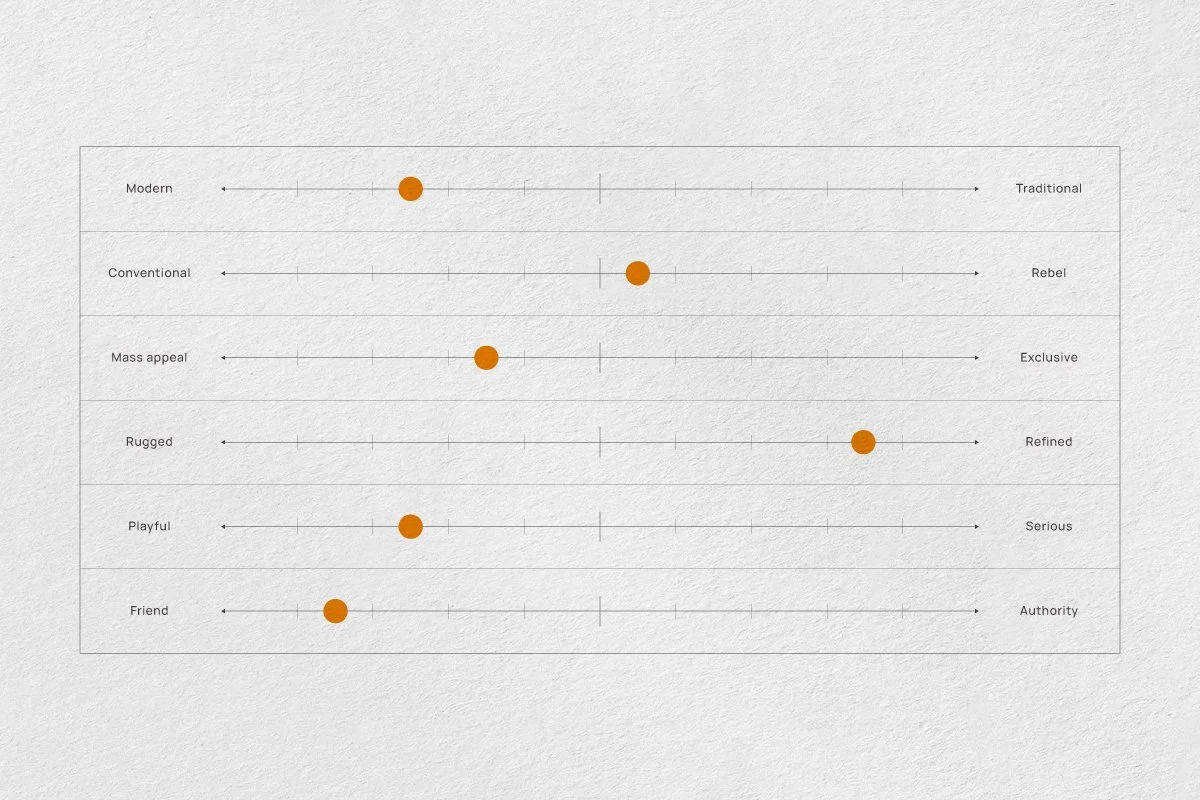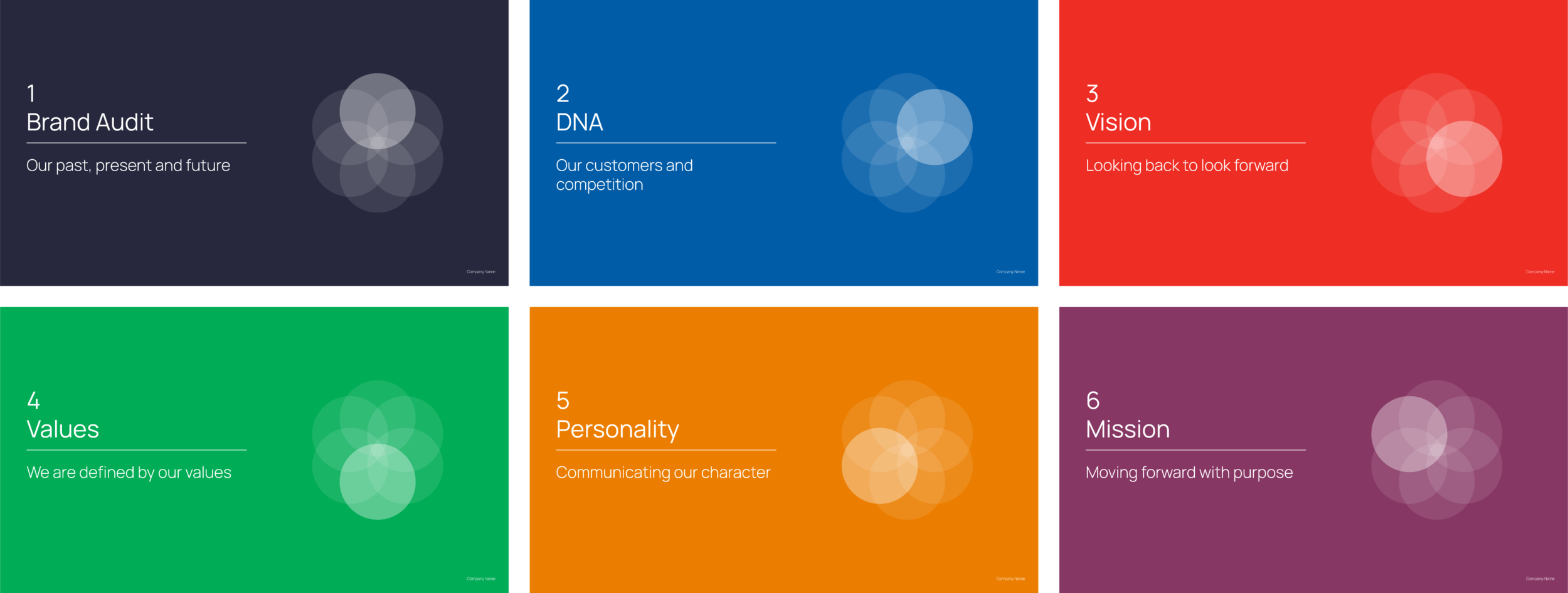Brand strategy is an important stage of any scale of branding project. In order to correctly position, and therefore create a brand, we need to understand as much as we can about the company, service or product.
The first part of the branding process is to build out a design brief for the project. Research is taken through a variety of ways. We will then work through a series of interviews with key business stakeholders, and build out a strategy document, so we can understand where the company sits in the market, it’s competitors and audience so we can position the brand and develop it’s visual personality and tone-of-voice.
Brand Strategy Toolkit
During informal interviews with key stakeholders of the brand, we get to know the company and begin to build out our design brief. We frame the interviews through six key areas including:
1. Brand audit
2. DNA
3. Vision
4. Values
5. Personality
6. Mission
1. Brand audit
Our past, present and future
"Quality and consistency create identity"
Jony Ive
What is in your future?
—During the first part of the workshop we will first consider what the future will look like for your business.
What are your goals for the next 5, 10, 15, 20+ years?
—We will then be more precise and create a roadmap for the coming years. We will understand what products or services might be added and how the company will evolve.
 1.1 Company Background
1.1 Company Background
2. DNA
Our customers and competition
"People don’t buy what you do. They buy why you do it."
Simon Sinek
To understand the brand's purpose we need to get to the ‘why’ behind it. We run dissect three questions.
What are you offering?
This is a simple, direct statement about what you are offering the world. Example: ‘We are nanofibre product specialists’
How are you unique?
What’s our secret sauce? What sets us apart from the competition? Example: “Made with 100% natural ingredients”
Why do you exist?
To reach the purpose of your brand, we ask aside from money, what is your reason for being?
2.2 Service Map
3. Vision
Looking back to look forward
"A brand is a story told consistently through time"
Michael Beirut
Road map
Using this road map, consider your organisation’s past, present and future. We should first discuss the past, what are the key milestones in our history that have bought us to the position that we are in today? Next, consider our ideal future. What is the blue sky situation for the organisation? Finally, consider where are you now? What are the organisation’s recent achievements?
 3.1 Road Map
3.1 Road Map
5. Personality
Communicating our character
"Brands, like people, have personalities and they can make or break them."
David Ogilvy
Brand personality sliders
We look into the personality of the brand, using brand personalty-sliders. Project-specific considering which aspects of a personality are relevant, this tool helps us dig into the brand personality.
 5.1 Personality Sliders
5.1 Personality Sliders
Brand archetypes
To help understand the personality further, we consider the 12 brand archetypes to see where your business will sit. Brand archetypes help to inform how the brand expresses itself in the world, from what position and context the brand’s visual language will come from.
 5.2 Archetype Wheel
5.2 Archetype Wheel
Why rebrand?
During these interviews it is also extremely helpful for us to understand ‘Why rebrand?’ and ‘Why now?’. We need to understand the client’s cause for change. There are various reasons behind a company’s need for rebranding but these causes often fall into the following categories:
Updated brand positioning
— New line of business or an evolved market positioning
Loss of relevance
— Has the identity become stale and lost relevance. Perhaps when the original brand was created it followed a particular design trend or aesthetic that is no longer relevant.
Design problem
—It is common for clients to come to us because the current branding has functional problems which are holding the business back. The existing logo might not have been created with social media profile images in mind and might not work well at a reduced size.
Trademark dispute
— Does the trademark conflict with another company?
Corporate merger
— A company merger or acquisition can result in a necessary name change and trademark revision.
Public image problem
— Public image issues can also necessitate rebranding. Think ‘United Airlines’, need I say more!
From these interviews we get to know an outline of the company that can then be explored further and built into a strategy deck that is used during the design process.
Brand Strategy Document
Once we have interviewed key stakeholders, researched and built a good understanding of the company and project, we can start to diagnose, and formulate a brand strategy document. This document will outline the new brand positioning through pragmatic analysis of the interviews and research.
Thank you
-
More Posts in Brand Toolkit
Week 1 – Overview
Week 2 – Brand Strategy
Week 3 – Visual Identity
Week 4 – Brand Launch

 1.1 Company Background
1.1 Company Background
 3.1 Road Map
3.1 Road Map 4.2 Value Map
4.2 Value Map 5.1 Personality Sliders
5.1 Personality Sliders 5.2 Archetype Wheel
5.2 Archetype Wheel 6.1 The ‘what’, ‘how’ & ‘why’
6.1 The ‘what’, ‘how’ & ‘why’